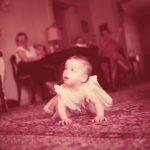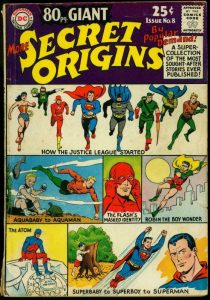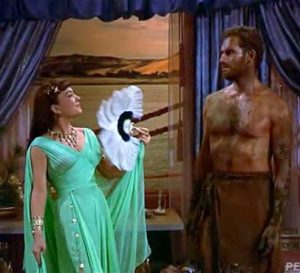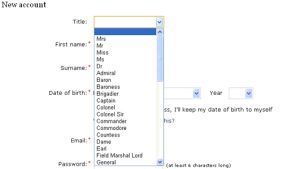I first posted this on January 2, 2017, right after the presidential election. I’m putting it up again as a reminder of how important it is to take care of our mental well-being in troubled times.
Recently, I’ve noticed more articles on staying grounded in joy and hope, even when surrounded by fear. Perhaps such articles have always been part of the general social media discourse and I am only now becoming sufficiently calm to notice them. But I rather think (hope!) this is a trend. In me, it certainly is. After the initial rounds of fear and trepidation, the constant adrenaline wore off. I’m not naturally a person who enjoys being fearful; from my experience training dogs, I suspect it’s not an appealing state for most of us. Some, I suppose, enjoy the “high” of confrontation, even violence, but I’m not among them. Harming others and myself is not where I want to live my life.
I see also posts affirming commitment to action, often in terms of “We Will Fight On!” and I’ve been resisting the urge to jump on that bandwagon. (Also the “Organize the Resistance” brigade.) It all sounds so necessary, a matter of putting my money where my mouth is. And is just as unrealistic for me as remaining in that state of terrified fury.
As unhealthy.
I am not objecting to others following the paths to which they are led. Resisting fascism and protecting the most vulnerable are inarguably vital to our survival as individuals, communities, and a society. I am thrilled that people have the drive and knowledge to organize such resistance. I will be right there, cheering them on. But I won’t be in the forefront.
It’s taken me a long time, coming from a family of dyed-in-the-wool organizers (labor unions, radical politics, war resistance, etc.) to come to terms with not being one of them. Undoubtedly, seeing the cost to my family played a role in my reluctance. I’ve marched in my share of civil rights and anti-war demonstrations, written a gazillion letters, painted an equal number of signs. But it’s not where my heart is. I’ve seen the joy in the eyes of those for whom this is their passion, their “thing.” I want to hug them all and say, “I’m so glad you’re out there, doing this for both of us.”
The fallacy is that making the world a better place is an either/or proposition. Either I’m out there, making headlines by facilitating events of vast numbers for the people’s revolution (as an example), or I’m sitting at home, knitting while Yosemite burns.
The fact is, any social movement happens on many levels. There’s the outward, banner-headline, political level, one that often requires organization on a national or international level. There is a community level, supporting your neighbors, particularly those in need. Soup kitchens are just as necessary as demonstrations outside the White House, although they serve fewer people. Taking care of ourselves and our families is yet another.
Quiet, mindful actions that focus on compassion, justice, and unity need not be limited to small numbers. In fact, outward activism must be balanced by inner activism. We can all find where we are called to act along that spectrum, and we can move back and forth (or in and out, whichever image works best) with circumstances, experience, and energy levels. What a relief to realize I don’t have to pick one thing or level of involvement!
So what speaks to me right now is remembering joy. The year to come is almost certainly going to be full of occasions for grimness if not despair, so I don’t want to start off that way. I want to fill up my “savings account of hope” as much as I can, cultivating those people, places, and things that lift my spirits. I want to never, ever let go of believing we can survive this, kindness and persistence will triumph, and no matter how dark it may seem at the moment, love will win.
I refuse my consent to fascism. I also refuse my consent to despair.
I affirm that I will cling tenaciously – relentlessly – to hope, and I invite you to do so, too.


 This post was written several years ago and published elsewhere.
This post was written several years ago and published elsewhere.
 Once I got reading under my belt, I couldn’t do enough of it–books, stories, cereal boxes, comic books. I gobbled up story like I was starving for it, initially uncritically, but fairly soon starting to think about why stories worked/didn’t work for me. In this I had a partner: my brother Clem. He and I amassed a comic book collection of perhaps 2000 well-worn, repeatedly read comics–most, but not all of them DC (the home of Superman and Batman). Clem and I haunted the smoke shop at the corner, where the new comics came in every… I think it was Tuesday… and conspired over which one of us would buy which. We took them home and read the them and then we talked over them. Clem, a far better artist than I will ever be, led the way in discussing the art. One of our favorite riding-on-the-subway games was to identify people who looked like they were drawn by specific artists.
Once I got reading under my belt, I couldn’t do enough of it–books, stories, cereal boxes, comic books. I gobbled up story like I was starving for it, initially uncritically, but fairly soon starting to think about why stories worked/didn’t work for me. In this I had a partner: my brother Clem. He and I amassed a comic book collection of perhaps 2000 well-worn, repeatedly read comics–most, but not all of them DC (the home of Superman and Batman). Clem and I haunted the smoke shop at the corner, where the new comics came in every… I think it was Tuesday… and conspired over which one of us would buy which. We took them home and read the them and then we talked over them. Clem, a far better artist than I will ever be, led the way in discussing the art. One of our favorite riding-on-the-subway games was to identify people who looked like they were drawn by specific artists. 
 My daughter is visiting, and wanted to watch the new Netflix version of Persuasion. She wanted me to watch Bridgerton when she was here over Christmas, but after 20 minutes of making increasingly acerbic comments I absented myself so as not to, as we say in my household, yuck her yum.
My daughter is visiting, and wanted to watch the new Netflix version of Persuasion. She wanted me to watch Bridgerton when she was here over Christmas, but after 20 minutes of making increasingly acerbic comments I absented myself so as not to, as we say in my household, yuck her yum. I was raised informally; the teachers at my (progressive) grade school were addressed by there first names; I called my parents’ friends by the first names as well–no Aunt or Uncle unless they insisted (only one person–my father’s accountant’s wife–insisted). This doesn’t mean I didn’t treat them respectfully, but it does mean that I grew up expecting a certain amount of reciprocal respect. When we moved and I went to a more traditional school, I called the teachers Miss/Mrs/Mr. I did ask once why we didn’t call all the female teachers Ms, and was told without irony it was because they didn’t have that many young unmarried women on staff. Okay then.
I was raised informally; the teachers at my (progressive) grade school were addressed by there first names; I called my parents’ friends by the first names as well–no Aunt or Uncle unless they insisted (only one person–my father’s accountant’s wife–insisted). This doesn’t mean I didn’t treat them respectfully, but it does mean that I grew up expecting a certain amount of reciprocal respect. When we moved and I went to a more traditional school, I called the teachers Miss/Mrs/Mr. I did ask once why we didn’t call all the female teachers Ms, and was told without irony it was because they didn’t have that many young unmarried women on staff. Okay then.